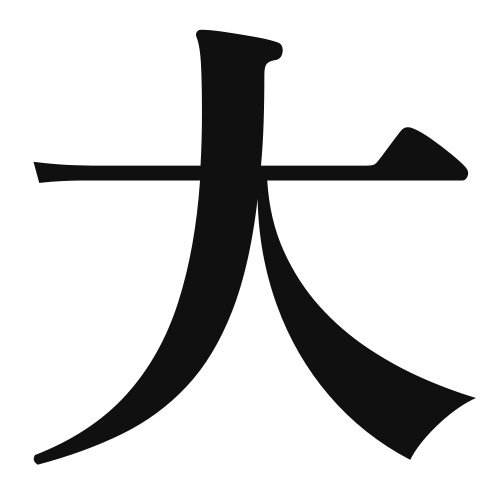1. Overview of Meaning
The kanji “大” (pronounced “dai” or “oo”) means “big” or “large.” It is often used to describe size, importance, or intensity.
2. Formation and Radical
Formation of the Kanji: The kanji “大” is a pictogram that originally depicted a person with outstretched arms, symbolizing something large or significant. It belongs to the category of pictographs.
Radical: The radical for “大” is also “大,” which is used in various kanji to convey the idea of largeness or greatness.
3. Examples of Usage
Common Words and Phrases: Some frequently used words that include “大” are:
- 大きい (ookii) – big
- 大事 (daiji) – important
- 大好き (daisuki) – love (very much)
Example Sentences in Daily Conversation:
- この犬はとても大きいです。 (Kono inu wa totemo ookii desu.) – This dog is very big.
- 彼は大事な友達です。 (Kare wa daiji na tomodachi desu.) – He is an important friend.
4. Synonyms and Antonyms
Similar Kanji: A similar kanji is “広” (hiro), which means “wide” or “broad.” While both convey a sense of largeness, “大” focuses more on size, whereas “広” emphasizes extent or breadth.
Antonyms: The antonym of “大” is “小” (shou), which means “small.” This directly contrasts with the concept of largeness.
5. Cultural and Historical Background
Relation to Japanese Culture: The concept of “大” is significant in Japanese culture, often associated with respect and importance. For example, “大和” (Yamato) refers to the ancient name for Japan, symbolizing its greatness.
Proverbs and Idioms: One common saying is “大は小を兼ねる” (Dai wa shou o kaneru), which means “The big can encompass the small,” suggesting that something large can also contain or include smaller things.
